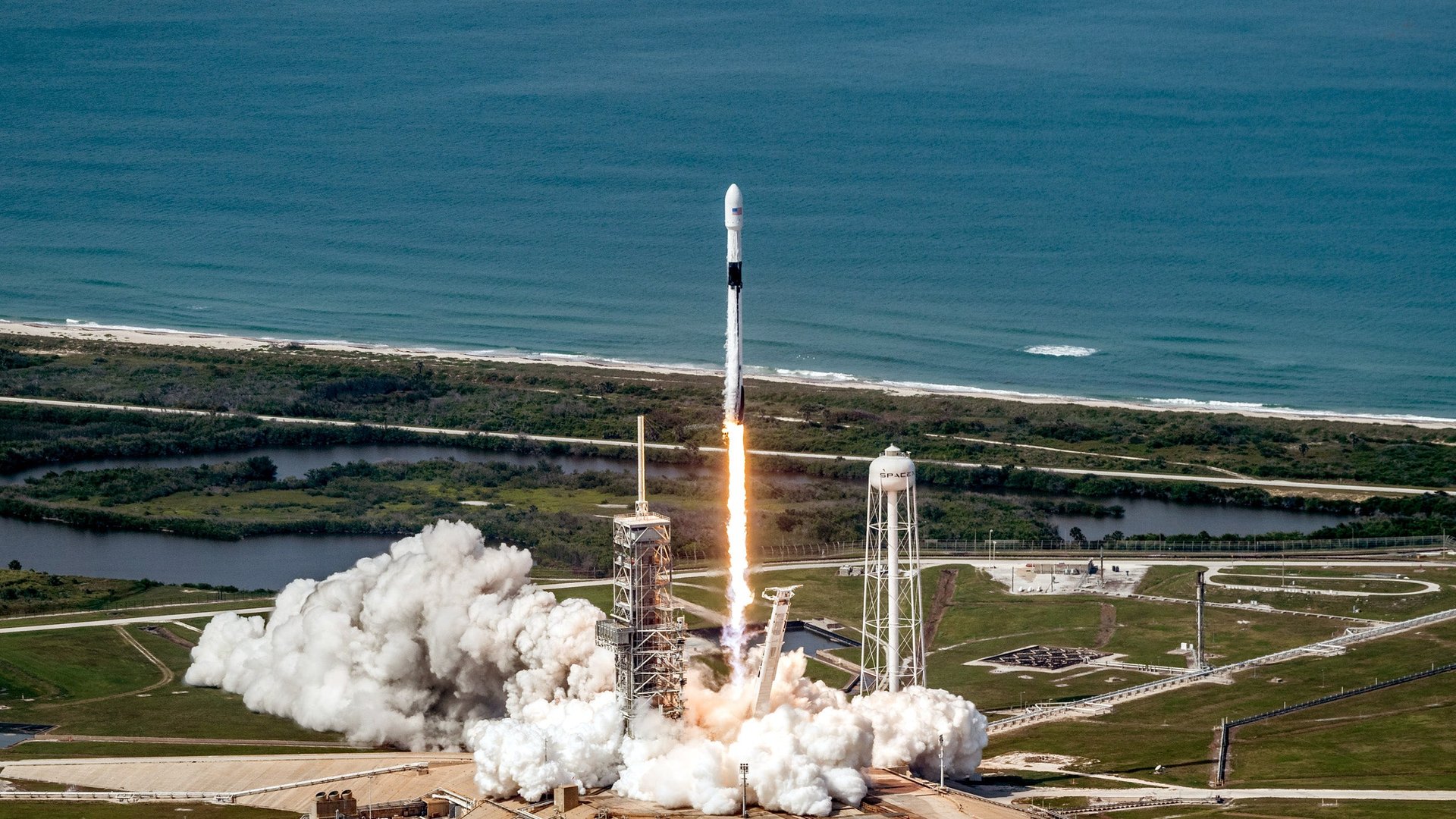SpaceX’s final upgrade to its Falcon 9 rocket isn’t quite final
SpaceX debuted the last major upgrade of the Falcon 9 rocket in a successful launch on May 11. But it has yet to demonstrate that a critical system in the redesigned rocket is safe enough to carry astronauts to the International Space Station for NASA.


SpaceX debuted the last major upgrade of the Falcon 9 rocket in a successful launch on May 11. But it has yet to demonstrate that a critical system in the redesigned rocket is safe enough to carry astronauts to the International Space Station for NASA.
Before the launch, SpaceX CEO and chief designer Elon Musk told reporters he believed that the new Falcon 9 met NASA’s stringent criteria for flying humans into space, but that he “could be mistaken.” Indeed, the vehicle that flew last week—which is designed to fly 10 times in a row with minimal refurbishment—still wasn’t in “crew configuration.” It lacked an upgrade to advanced high-pressure vessels that worry NASA safety advisors and took the blame for the launchpad explosion of a Falcon 9 in 2016 during fueling.
While the data derived from the May 11 launch will be used to demonstrate the vehicle’s capabilities and safety to NASA, SpaceX will still need to fly the rocket seven more times with the new tanks integrated and in “crew configuration” before the agency will certify it to carry astronauts.
“In aerospace, ‘testing like we fly” is a long standing tenant for safe operations and understanding of critical systems,” the space agency said in a statement, adding that “early Falcon 9 Block 5 flights will provide important insight into the rocket, and will contribute to the certification efforts for the Falcon 9 Block 5 configuration for crew.”
Musk had said “Block 5” is intended to be the final iteration of the Falcon 9 before SpaceX engineers turn to a larger interplanetary rocket. The new project may have to wait a little longer.
SpaceX told Quartz that the new vessels are now ready to go for an uncrewed demonstration mission scheduled in August. In 2017, the company launched eight rockets in the final five months of the year. It’s aiming for a faster cadence in 2018—so barring a rocket failure, SpaceX should have seven opportunities before its targeted crewed flight in December 2018.
The bottle problem
SpaceX chills its propellants, particularly liquid oxygen, to make them denser and thus pack more power into the same volume of tank. It also uses lightweight bottles that are made of advanced carbon composites and lined with aluminum to store helium gas that maintains pressure in the propulsion system.
When the Falcon 9 was destroyed in 2016, engineers ultimately blamed the ultra-cold liquid oxygen, which they believe solidified inside a buckle in the aluminum liner of one of those bottles, known as a composite overwrap pressure vessels or COPVs. Solid oxygen is extremely volatile. Any friction or shock can cause it to ignite—which it did, destroying the rocket and the satellite on top of it. SpaceX changed its fueling procedures after the mishap, and has had no further anomalies.
Since then, SpaceX and NASA have worked feverishly to solve the problem with the bottles. Ahead of the May 11 launch, Musk said he thought concerns about the COPVs were “overblown”—but also that his team “agonized” over the redesign and tested “the living daylights” out of what he called “probably the most advanced pressure vessel ever developed by humanity.” He added that, should NASA have any further concerns, his team could swap out the COPVs and use tanks made out of Inconel, an alloy traditionally used in aerospace.
The successful flight on May 11 suggested a backup plan wasn’t necessary, but now we know the new COPVs weren’t onboard.
Load ‘n go
Musk’s company is known for constantly iterating the designs of its vehicles, a process that has seen it develop the first vertical-takeoff-and-landing reusable rocket to reach orbit—and one that is cheap enough to seize market share from competitors to boot. But NASA officials have fretted about how that approach affects safety, and after a launch failure in 2015, pushed SpaceX to reorganize for more reliability.
The company got good news at the meeting of a panel of independent NASA safety advisors this week. While some outside advisers have critcized SpaceX’s plans to load propellant on the rocket while astronauts are onboard, a concept known as “load ‘n go,” the Aerospace Safety Advisory Panel (ASAP) sounded confident in the company.
“Assuming there are adequate, verifiable controls identified and implemented for the credible hazard causes, and those which could potentially result in an emergency situation, or worse, loss of crew and vehicle, it appears that load-and-go is a viable option for the program to consider,” former astronaut Brent Jett said at the meeting.
That’s good news for SpaceX—if its COPVs work.
“Whether you load the crew first and then propellant, or propellant and then crew, either way the COPV issue has to be resolved,” Jett said.